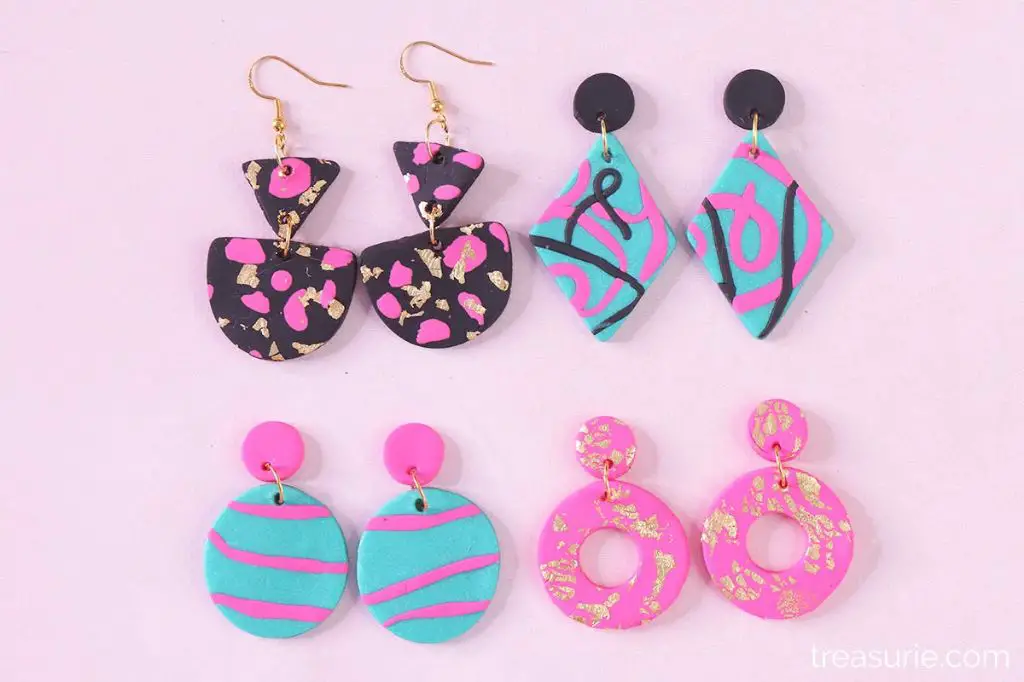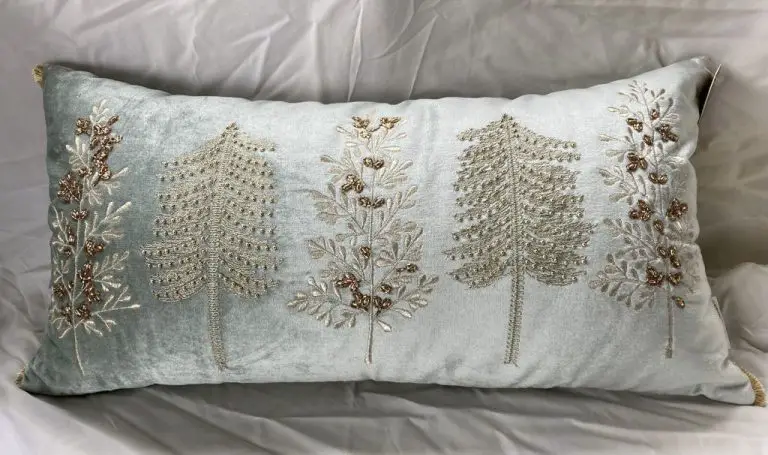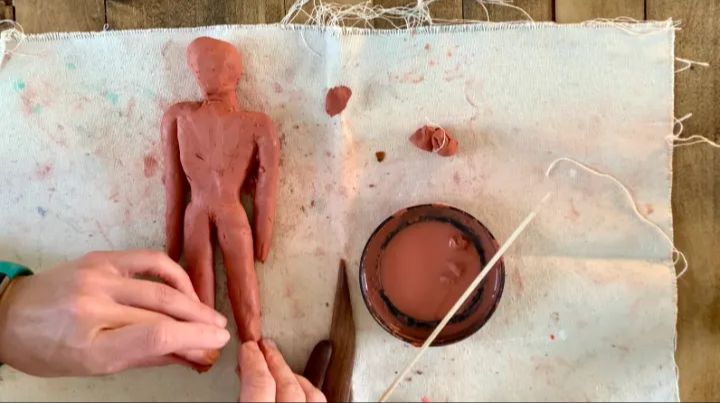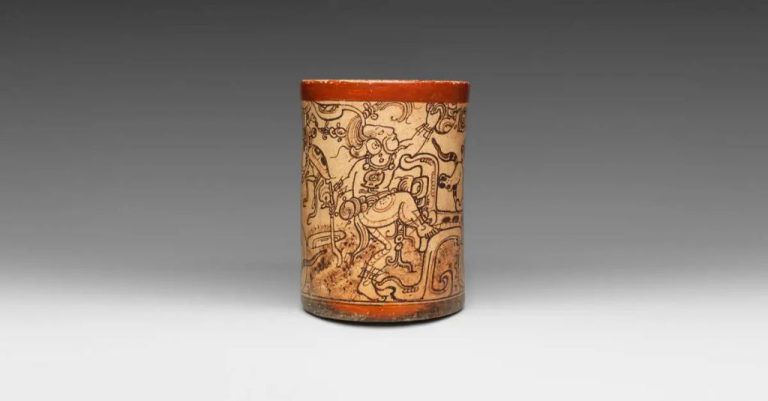Is Polymer Clay Good For Jewelry?
Polymer clay is a type of sculptable modeling clay that hardens when baked in a conventional oven. It is composed of polymers, fillers, and pigments that can be shaped and colored to create a wide variety of jewelry and crafts. Polymer clay has become increasingly popular for jewelry making in recent years due to its versatility, affordability, and accessibility to hobbyists and crafters.
Unlike other clays that require special ovens or kilns to harden, polymer clay simply bakes and cures in a regular home oven. This makes it easy for anyone to work with polymer clay at home without expensive equipment. A piece made from polymer clay can go from a hand-sculpted model to a durable, finished jewelry item just by baking it according to the manufacturer’s instructions.
The popularity of polymer clay has surged with the growth of homemade crafts and artisan jewelry. Its modeling capability and vivid colors make it ideal for fashioning vibrant, customizable, handmade jewelry and accessories. From earrings and beads to pendants, buttons, and focal pieces, polymer clay enables endless creative possibilities for jewelry makers.
Pros of Polymer Clay Jewelry
One of the biggest pros of using polymer clay for jewelry is that it is very malleable and easy to work with. Polymer clay remains soft and pliable at room temperature, allowing jewelry artists to shape and mold it into intricate designs without needing specialized tools or equipment (source). The hands-on, tactile nature of polymer clay makes it fun and satisfying to sculpt pieces by hand.
Unlike materials like metal or glass, polymer clay can be shaped and reshaped multiple times before baking or curing. This forgiving property allows for experimentation and gives jewelry makers flexibility to modify a design as they work. Polymer clay is an accessible material for beginners but also has versatility for more advanced techniques like caning and mokume gane.
Once cured either in a home oven or UV lamp, polymer clay hardens into a durable, lightweight plastic that can be sanded, drilled, and finished like wood or ceramic. The finished clay takes on a glossy appearance and provides an eye-catching medium for colorful, glossy jewelry designs.
Cons of Polymer Clay Jewelry
While polymer clay offers many benefits for jewelry making, it also has some drawbacks to consider:
Polymer clay can become brittle after baking, making pieces prone to breaking or shattering if dropped or impacted. This is especially true for very thin or intricate polymer clay pieces. To reduce brittleness, avoid over-baking the clay and use flexible brands like Fimo Professional or Sculpey III (Source). Cooling the clay slowly after baking also helps prevent brittleness.
Intricate clay pieces may require an armature or frame for stability. Brittleness can also be mitigated by handling baked clay pieces gently and avoiding dropping or bending them.

Best Practices for Working with Polymer Clay
Proper conditioning and baking are two of the most important best practices when working with polymer clay. Conditioning refers to softening and warming up the clay before use. This makes the clay smooth and pliable so it is easier to shape and mold. Polymer clay straight from the package can be stiff and brittle. To condition it, knead it firmly with your hands for a few minutes until it softens. You can also run it through a clay conditioning machine or pasta machine to quickly soften it up. Some clays benefit from being warmed up before conditioning as well. Try letting the clay sit in your pocket for 30 minutes before kneading to warm it with your body heat (https://thebluebottletree.com/polymer-clay-tips-beginners/). Properly conditioned clay will be smooth, pliable, and easy to shape without cracking.
Baking the clay fully is also crucial. Each brand of polymer clay has recommended baking instructions on the package. In general, thinner pieces need less time while thicker pieces need longer. Standard baking temps range from 265°F to 275°F. Underbaking can result in pieces that are sticky, soft, or prone to cracking later on. Always test a piece after baking to ensure it is fully hardened. Avoid overbaking as that can cause discoloration or brittleness. Let pieces cool fully before handling after baking.
Finishing and Protecting Polymer Clay Jewelry
After baking polymer clay, the surface will have a matte finish that is porous and can collect dirt and oils from skin contact over time. Applying a protective finish is highly recommended for polymer clay jewelry to make the surface smooth, shiny, and water resistant. There are several options for finishing polymer clay:
Polymer clay can be buffed with steel wool or fine sandpaper to create a smooth surface. A buffing wheel or dremel tool can also be used for a high-shine finish. It’s important to buff gently to avoid friction heat which could distort the clay. Smooth buffed clay still needs a sealant for best protection.
An acrylic glaze or liquid clay like Sculpey Glaze can be brushed on and rebaked according to package directions for a durable glossy coating. Multiple coats may be needed for good coverage.
Spray sealants like matte or gloss varnish, acrylic spray, and polyurethane provide a fast finish with even coverage. Light coats should be applied and allowed to fully dry between applications.
Two-part epoxy resin can be poured over clay components for a thick protective coating with a glass-like appearance after curing. The piece should be fully cleaned before applying resin.
UV-curing resin provides a crystal clear glossy finish for jewelry pieces. It cures under UV light within minutes to form a durable plastic coating.
Automotive clear coat spray is a more heavy duty option suitable for items like jewelry boxes. It should be applied in a well-ventilated area.
Whichever finish is chosen, it’s critical to fully cure polymer clay and allow it to cool completely after baking before applying any coating. This prevents trapped moisture from causing bubbles or clouding in the finish. With proper finishing, polymer clay jewelry will retain its beauty for many years.
Advanced Polymer Clay Jewelry Techniques
Experienced polymer clay artists use advanced techniques to create stunning designs and effects. Three popular advanced techniques are mokume gane, canes, and inclusions.
Mokume gane involves stacking and manipulating layers of colored clay to achieve unique patterns reminiscent of woodgrain. By carefully slicing through the stacked layers, beautiful flowing lines are revealed. Mokume gane takes practice to master, but the visual impact is striking. See this mokume gane tutorial for step-by-step instructions: https://www.youtube.com/watch?v=B3ytpBEJh7c
Canes allow for intricate designs by combining and reducing patterns of colored clay. Canes can feature geometric shapes, landscapes, animals, abstract designs, and more. Slices are cut from the cane and applied to jewelry. Some popular cane techniques are kaleidoscope canes, mosaic canes, and portrait canes. This polymer clay cane tutorial covers the basics: https://www.sculpey.com/blogs/blog/polymer-clay-techniques-based-on-experience-level
Inclusions add interest by embedding items within the clay. Seashells, beads, seeds, and crushed glass are common inclusions. Inclusions can be fully encased or partially exposed. Position inclusions before curing the clay. Check that any included materials can withstand the curing temperature.
Suitable Findings and Embellishments
When creating polymer clay jewelry, it’s important to use high quality findings and embellishments that are compatible with the clay. Some key things to consider:
For findings like ear wires, clasps, pins, etc. look for metals like sterling silver, gold filled, or titanium. These higher quality metals are less likely to tarnish or react with the clay. Plated metals can wear off over time. According to The Blue Bottle Tree, titanium, niobium, and gold-filled are great options for many people.
Pay attention to any embellishments and make sure they are safe to bake at the temperature you’ll be using for the clay. Things like glass beads, crystals, and plastic should be glued on after baking. But items like metal charms, seed beads, and porcelain can usually withstand baking. Test items first if uncertain.
When gluing findings and embellishments, use a strong two-part epoxy resin glue suitable for metals and plastics. Avoid super glues which can become brittle. An epoxy will create the most durable bond. Let all glues fully cure before wearing.
Proper finishes like a UV resin or jewelry grade enamel spray can help protect and seal the clay surface. This prevents embellishments from pulling off the clay when worn.
Polymer Clay vs. Other Jewelry Materials
Polymer clay has some distinct advantages and disadvantages compared to other common jewelry-making materials like metal, gemstones, and enamel.
Compared to precious metals like gold, silver, and platinum, polymer clay is much more affordable and accessible to hobbyists and new jewelry makers. Polymer clay also allows for very detailed and customizable designs since it can be molded, shaped, and textured. However, precious metals are more durable, valuable, and hypoallergenic than polymer clay. Precious metal jewelry also has a luxurious, high-end look and feel that polymer clay lacks.
Polymer clay has some similarities to working with gemstones – both allow for bright colors and decorative shapes in jewelry. However, gemstones are mined natural materials, while polymer clays are synthetic. Quality gemstones are rare and expensive, limiting design options. Polymer clays can mimic the look of gems at a lower price point. However, gemstones have intrinsic value, brilliance and “life” that polymer clay lacks.
Compared to enamel, polymer clay can achieve a glass-like finished look with added dimensionality. However, enamel allows for crisp fine lines and a brighter finish. Enamel also has a perceived added value as a historical, traditional technique. Both polymer clay and enamel carry risks of chipping or cracking if improperly handled after hardening.
Overall, while lacking some qualities of precious metals, gemstones, and enamel, polymer clay offers an accessible, moldable material for customized statement jewelry. The range of colors, ability to shape, and ease of use make polymer clay a valuable material for non-professionals exploring their creativity through jewelry-making.
Sources:
Caring for Polymer Clay Jewelry
Proper care is important for maintaining the beauty of polymer clay jewelry over time. Here are some tips for cleaning, storing, and repairing polymer clay jewelry:
For cleaning polymer clay earrings or other jewelry, use a slightly damp, non-abrasive cloth and gently wipe the surface. Avoid using acetone, rubbing alcohol or other harsh chemicals as these can damage the clay finish (SageClayCo, 2022).
Store polymer clay jewelry in a clean, dry place away from direct sunlight and heat which can cause discoloration. Keep pieces in separate compartments or bags to prevent scratches and dents from items rubbing together (Hernan Design Co, 2022).
Minor scratches or scuffs can often be gently buffed out with a soft cloth. For deeper damage, lightly sand the area with fine grit sandpaper and buff to restore the finish. Avoid over-sanding as this will change the shape (NahemaClayCo, 2022).
If a piece breaks, use a liquid clay like Sculpey Bake and Bond to reattach it. Let it dry fully before handling. For complex repairs, you may need to rebake the item on low temperature.
Take care not to bend polymer clay pieces, treat them gently as you would any fine jewelry. With proper care, polymer clay jewelry can last for many years.
Conclusion
In summary, polymer clay offers many benefits for jewelry making, including the ability to achieve diverse colors, textures, and designs. It’s lightweight, durable, and easy to shape and mold into complex forms. However, polymer clay is not suitable for all jewelry pieces. It can be brittle in thin areas and is not ideal for large statement pieces that need more structural integrity. It also requires proper baking and sealing to maximize durability.
For small to mid-sized jewelry like pendants, charms, beads, and lightweight earrings, polymer clay is an excellent choice. The versatility and customization options make it a great material for hobbyists and artisan jewelry makers who want to get creative. Just be sure to use proper techniques for conditioning, sculpting, and baking the clay. Additionally, take care to select suitable findings and coat finished pieces with varnish or resin for protection and shine. With its vibrant colors and ability to mimic other materials, polymer clay is a fun, budget-friendly option for producing unique handmade jewelry pieces.



